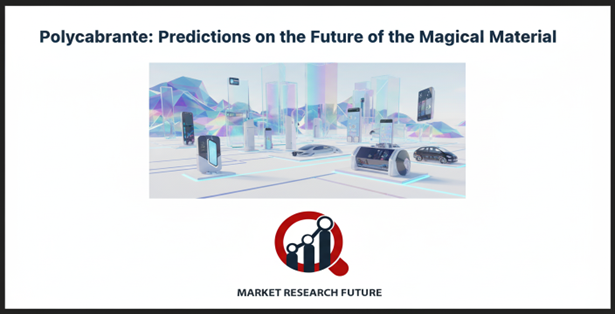Polycarbonate: Predictions on the Future of the ‘Magic’ Material

Polycarbonate Market Overview
Polycarbonate is a versatile, high-performance thermoplastic material renowned for its transparency, toughness, and heat resistance. It is widely used in applications ranging from safety goggles, eyeglasses, and CD/DVD cases to automotive windshields, sunroofs, and bullet-proof windows. Its combination of glass-like clarity and impact resistance has positioned polycarbonate as a preferred alternative to traditional glass and other plastics in diverse industries.
The global polycarbonate market is evolving rapidly due to increasing demand in sectors such as automotive, electronics, construction, and consumer goods. Rising consumer awareness about durable, lightweight, and cost-effective materials is driving adoption. Market estimates indicate steady growth in polycarbonate production and application, supported by advancements in polymerization technology, sustainable manufacturing practices, and the development of specialty grades tailored for specific industrial uses.
What is Polycarbonate?
Polycarbonate is a synthetic thermoplastic polymer characterized by the repeating chemical structure “–O–(C=O)–”, where C=O represents the carbonyl group. It is produced through the polymerization of bisphenol A (BPA) and di-2-ethylhexyl phthalate (DEHP) monomers, using acid-mediated reactions that create strong, transparent sheets or moulded components.
Polycarbonate’s key properties include:
- High impact resistance and shatterproof characteristics
- Heat resistance without crystallization or brittleness
- Lightweight and mouldable into complex shapes
- Optical clarity, making it suitable for lenses and transparent panels
Its combination of strength, versatility, and cost efficiency—approximately 70% cheaper and half the weight of glass—makes polycarbonate an attractive material for both industrial and consumer applications.
Market Growth Drivers
The polycarbonate market is expanding due to several converging trends:
- Rising Industrial and Consumer Applications
Polycarbonate is increasingly used in automotive components, electronics, construction, and personal protective equipment, driving market demand globally. - Technological Advancements in Production
Innovations in polymerization and moulding techniques allow for high-clarity sheets, specialty optical lenses, and durable moulded components, enabling new applications and reducing production costs.
- Shift Towards Lightweight Materials
Industries are seeking cost-effective, lightweight alternatives to glass and metals, particularly in automotive and electronics, to improve energy efficiency and reduce logistics costs. - Sustainability and Recyclability
Polycarbonate’s ability to be recycled and reused aligns with growing consumer and regulatory emphasis on sustainability, boosting market appeal.
- Rising Demand in Consumer Electronics and Eyewear
Polycarbonate lenses and protective screens are favored for impact resistance, optical clarity, and lightweight comfort, increasing adoption across eyewear and electronics markets.
Challenges
Despite its advantages, the polycarbonate market faces certain challenges:
- Health Concerns: BPA, used in production, has raised consumer safety debates.
- High Processing Requirements: Manufacturing requires controlled temperatures and precise polymerization steps.
- Competition from Alternative Materials: PET, acrylic, and glass substitutes may limit adoption in specific segments.
Addressing these issues through BPA-free alternatives, process optimization, and sustainable production methods is key to sustaining market growth.
Regional Insights
- North America: Strong demand in automotive, electronics, and construction; significant adoption of specialty polycarbonate grades.
- Europe: Market driven by sustainability regulations, lightweight automotive initiatives, and high-tech manufacturing.
- Asia-Pacific: Fastest-growing region, fuelled by electronics, automotive, and consumer goods production in China, Japan, and India.
- Latin America & Middle East/Africa: Emerging markets with increasing adoption in construction, consumer goods, and safety equipment.
Future Outlook
The future of polycarbonate lies in advanced material development, high-performance composites, and sustainable production techniques. Innovations such as BPA-free polycarbonates, UV-resistant grades, and enhanced optical materials will expand applications in automotive, aerospace, electronics, and healthcare.
As industries increasingly demand lightweight, durable, and transparent materials, polycarbonate is poised to maintain its position as a “magic” material that combines performance, versatility, and cost efficiency.
Conclusion
Polycarbonate continues to be a strategic material across multiple industries, offering unmatched strength, transparency, and moldability. With technological innovation, sustainability initiatives, and expanding industrial applications, the polycarbonate market is set for sustained growth and diversification, reaffirming its role as a critical material for the next generation of consumer and industrial products.

Leave a Comment